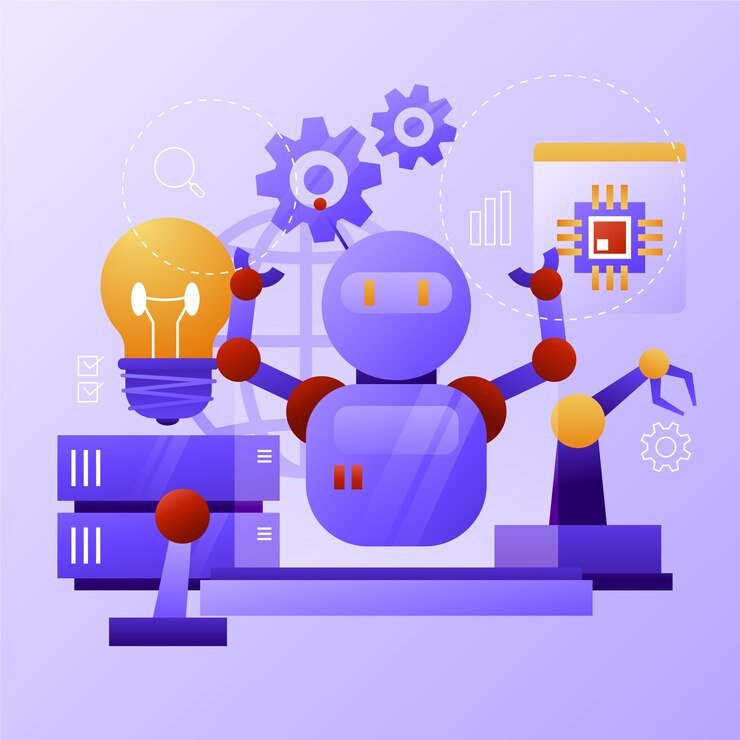Understanding AI and Agile: Concepts and Definitions
Artificial Intelligence (AI) is a branch of computer science that aims to create systems capable of performing tasks that typically require human intelligence. Key concepts within AI include machine learning, deep learning, and natural language processing. Machine learning focuses on algorithms that allow computers to learn from and make predictions based on data. Deep learning, a subset of machine learning, utilizes neural networks to analyze various data types, enabling more complex decision-making processes. Natural language processing (NLP), another vital aspect of AI, facilitates the interaction between computers and human language, allowing systems to comprehend, interpret, and produce text and speech.
On the other hand, Agile is a project management methodology that emphasizes flexibility, collaboration, and the iterative development of products. The Agile approach encourages teams to work in short cycles, called sprints, allowing for regular reassessment and adaptation of plans based on stakeholder feedback. This continuous feedback loop enables teams to respond quickly to changing requirements, ultimately leading to higher quality outcomes and increased customer satisfaction. Central to Agile principles is the concept of cross-functional teams, where members cooperate to leverage their diverse skills and knowledge.
The intersection of AI and Agile integration presents significant opportunities for enhancing project management and product development processes. AI technologies can automate routine tasks, provide insightful data analytics, and even facilitate decision-making, making processes more efficient and effective. Conversely, Agile practices can enhance AI projects by enabling teams to rapidly develop, test, and refine AI models through iterative cycles. This harmonious relationship between AI and Agile methodologies not only streamlines workflows but also fosters a more innovative environment that can quickly adapt to emerging challenges and opportunities.
Benefits of Integrating AI into Agile Practices
The integration of artificial intelligence (AI) into Agile methodologies holds significant benefits for organizations striving for efficiency and adaptability. One key advantage is the improvement of project management. By utilizing AI algorithms, teams can analyze vast amounts of data to predict project timelines and potential bottlenecks, allowing for more effective planning and resource allocation. Automation tools can offer real-time insights, enabling project managers to make informed decisions swiftly, based on comprehensive project metrics.
Enhanced decision-making is another pivotal benefit of AI in Agile environments. AI-driven analytics facilitate the evaluation of project scenarios and outcomes, enabling stakeholders to assess risks and opportunities with greater accuracy. For instance, AI can project the potential success of various user stories based on historical data, providing teams with evidence-based recommendations that help prioritize tasks more effectively. This data-centric approach not only mitigates uncertainty but also aligns project objectives with business goals.
Moreover, AI fosters better team collaboration. It enables distributed teams to connect and communicate more effectively by automating routine tasks and information sharing, thereby ensuring that all members have access to up-to-date project information. Furthermore, AI-powered tools can enhance the role of Scrum Masters and product owners by analyzing team dynamics, thereby suggesting improvements to workflows that ultimately refine collaboration strategies.
Productivity is markedly increased through the deployment of AI integration in Agile practices. By reducing manual efforts, enhancing data analysis, and facilitating better decision-making, teams can concentrate more on creative problem-solving and innovation. Real-world examples demonstrate that companies utilizing AI alongside Agile methodologies have experienced considerable increases in productivity and project success rates. The combination of AI and Agile not only streamlines processes but propels organizations towards achieving their strategic goals more effectively.
Challenges and Considerations for Effective Integration
Integrating artificial intelligence (AI) into Agile frameworks presents organizations with both significant opportunities and notable challenges. One primary concern involves data privacy, as the deployment of AI often necessitates the collection and analysis of vast amounts of data. Organizations must ensure adherence to relevant regulations and guidelines, such as the General Data Protection Regulation (GDPR) in Europe, while also protecting user data from potential breaches. This requires not only robust data governance policies but also transparent communication with stakeholders regarding how data will be used.
Another critical challenge lies in the need for a cultural shift within the organization. Traditional Agile practices may need to evolve to fully embrace AI’s capabilities. This transition requires leadership to foster an environment that encourages innovation and flexibility, facilitating collaboration among team members. Additionally, it is important to cultivate a mindset that welcomes change and views AI not as a replacement but as a complementary tool that enhances existing processes.
Training and skill development are also vital for successful AI Agile integration. Team members may find themselves unequipped to work alongside advanced automation tools, leading to potential frustration and resistance. Organizations should invest in targeted training programs to enhance both technical skills and an understanding of AI methodologies. These programs could encompass workshops, webinars, or mentorship initiatives focused on practical AI applications within an Agile context.
Resistance from team members may emerge as another barrier. To mitigate this concern, leaders should engage in open dialogue with teams, addressing fears and misconceptions about AI. Highlighting successful case studies of AI Agile integration can demonstrate tangible benefits, fostering greater acceptance. Moreover, involving team members in the integration process allows them to voice their opinions and contribute to a smoother transition.
By acknowledging these challenges and employing strategic approaches, organizations can harness the full potential of AI in Agile environments, leading to improved efficiency and innovation.
Practical Steps for Implementing AI in Agile Projects
Integrating AI into Agile projects can substantially enhance productivity and decision-making processes. To begin, identify suitable automation tools that align with your project goals. Evaluate AI tools based on their compatibility with existing workflows, their ability to provide actionable insights, and how well they can be tailored to meet specific needs. Popular options include machine learning platforms and predictive analytics software, which can streamline various Agile processes.
Once the right tools are identified, establish a clear roadmap for integration. This roadmap should outline the stages of incorporation, from pilot testing to full-scale deployment. It’s essential to prioritize tasks that can benefit most from AI, such as backlog refinement, sprint planning, or team performance assessments. Engaging stakeholders throughout this process ensures alignment and encourages buy-in, ultimately leading to smoother integration.
Training teams effectively is another crucial step in this integration journey. Organizing workshops and providing resources on both the new automation tools and Agile principles will foster competence and confidence among team members. Moreover, consider appointing champion figures or AI specialists within teams to address questions and provide ongoing support as the project evolves.
Measuring success is vital for maintaining momentum. Establish key performance indicators (KPIs) to evaluate the impact of AI on project outcomes, team efficiency, and overall performance. Regular assessments can highlight improvements and areas requiring adjustments. In the long term, the landscape of AI agile integration is likely to evolve, driven by advancements in technology. Continuous adaptation is essential. Agile teams must remain responsive, embracing iterative feedback and ongoing learning to leverage AI effectively in their projects.



